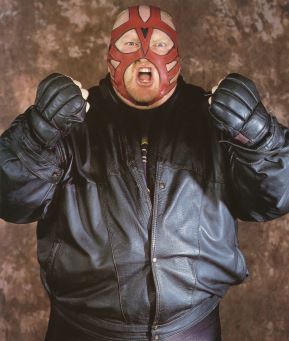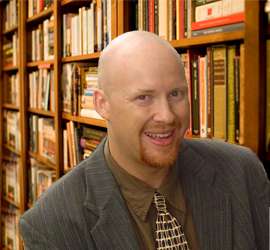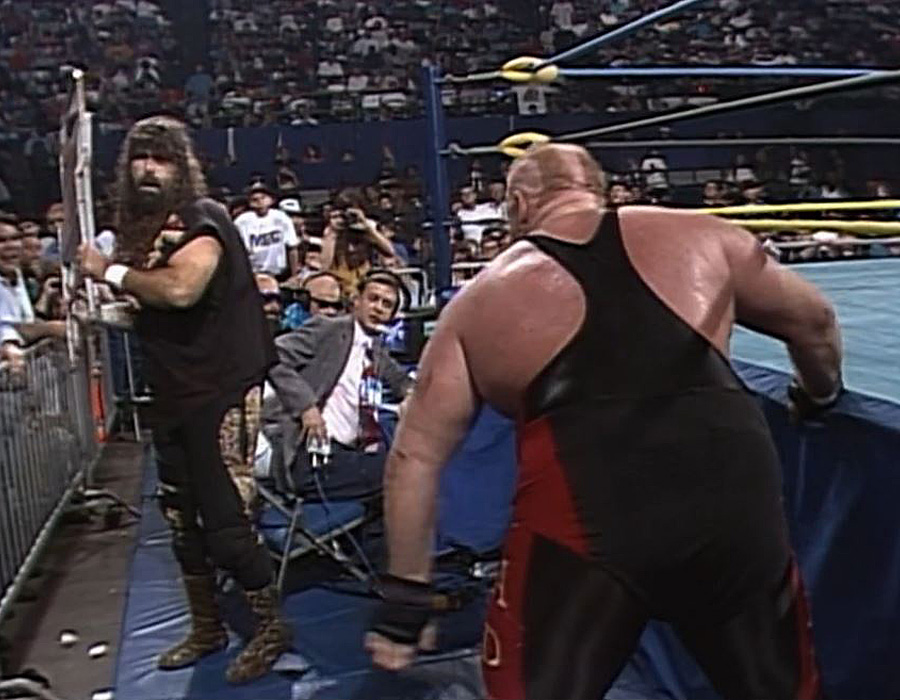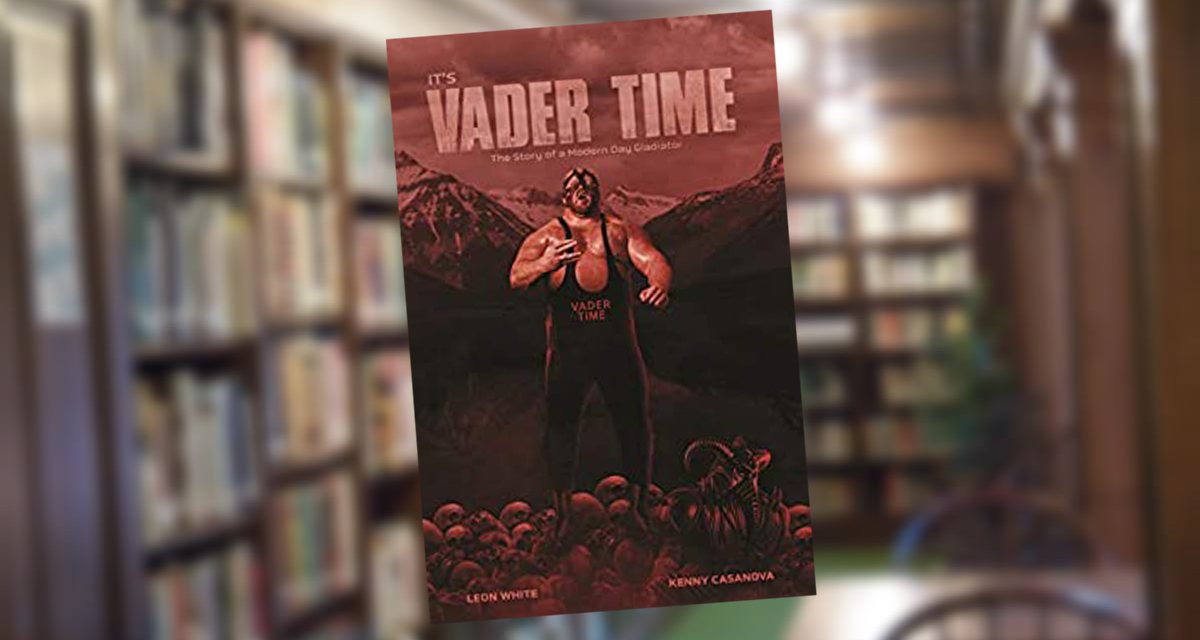When I was a child there was a man I was in awe of. This giant filled my TV screen and was as quick as a cat yet built like a brick wall, and when he attacked every blow looked like it broke the bones of his opponent. There was an aura to this colossus. I did not know his background, and I had no idea how he came to be in the ring destroying lesser men that he was clearly a class above. Over the years as time and politics attempted to ravage him and his statue so that he shrunk ever so slightly, that aura was still there protecting him, a man larger than life no matter what. Who’s the man? Vader’s the man.

The late Leon White aka Vader.
It’s Vader Time: The Story of a Modern Day Gladiator is the autobiography from Big Van Vader, also known as Leon White, Big Bull, Bull Power or simply Vader, and ghostwritten by Kenny Casanova. It is hard to imagine Vader sitting down at his laptop and writing this book out, so Casanova deserves equal credit for getting the man’s story down on paper. Together they accomplish a quality wrestling book, not without its faults but definitely full of charm. While reading, one also can’t help but be aware of the race against time that the book became. Vader was working on this autobiography at a time when his health was failing and it was published shortly after his death, thus you cannot help but be cognizant of the ultimate conclusion the final chapters are heading towards. Despite this the team does a great job at making you forget what is coming until you reach the end pages, which are both heartbreaking and touching.
Over 400 pages, we get the life story of Vader, learning about his childhood, his early efforts in athletics and his success as a football player before turning to wrestling. It may on the onset seem to be a cliched path to the ring for a big man, but Vader’s journey is not your standard football player to wrestler story. He was an elite level player that got game time in a Superbowl in his short professional career, and this period of his life is covered in enough detail to give the reader some background. Personally I would have loved to hear more about Vader’s two seasons in the National Football League (NFL), but the brief chapter highlights an issue any wrestling autobiography will have. There is always the battle to judge the time that should be devoted to the pre-wrestling period of the subject’s life, because if we are honest with ourselves, the pro wrestling period is why we have bought a ticket. Here the writers get the balance just right to get us to the days of Baby Bull in the American Wrestling Association (AWA). There is then the battle to tell us about the wrestler’s career and personal life, which this book is light on. There is a lack of information about Vader’s marriage and family, but you get the feeling Vader simply did not want to revisit these aspects of his life and prefers to stick to the stories about the man they call Vader instead.
This independently produced book, out now from Walking on Hot Waffles (WOHW) Publishers, does not have the shine of some other pro wrestling biographies, and while it may seem like nitpicking to call this out, it eventually becomes a strength for the book. When first reading I noticed that the book could simply use some better formatting and an extra round of proofreading, more bleed on the edges of the pages and spacing of text to structure the chapters. A little polish. It was also clear to this reader that the bulk of the content was essentially a transcript of Vader telling his story to Casanova as they worked through his career, with less focus on fact checking and detailing the events from third party sources to verify. This is even acknowledged in the copyright and liability small printing at the start of the book (an amusing Easter egg worth going back to if you missed it). Having recently read the hugely detailed and fact checked The Eighth Wonder of the World: The True Story of Andre the Giant, this aspect of the book was quite noticeable and at first felt like a flaw, but over the course of the book actually becomes part of the charm.

Kenny Casanova.
Several chapters into the book I found myself settling into the flow of the conversation, and rather than feeling like a dry attempt to capture every detail, I started to imagine myself sitting with Vader and Casanova in a bar, cracking open a cold beer and just enjoying the time as Vader speaks about his career. With any autobiography we are faced with the simple fact that it will be one side of the story, it is just a case of how willing the subject is to be self reflective, and Vader strikes the right balance. He is by no means perfect but also shows the belief in himself that lead to such a successful career. The decision to skip minute details allows the conversation to flow with Vader recalling enough information to paint the pictures without drowning us in the history of every match, attendance figures, match ratings and buy rates. It is the perfect book to read over a drink in a comfy chair and feel that you are in good company.
Vader had a remarkable career with a lot of ups and downs, all of which he walks us through as we move from his AWA days onto tours of Germany and Japan and to what many consider his peak in the early ’90s: working for New Japan Pro-Wrestling (NJPW) and World Championship Wrestling (WCW). This is the time that historians point to that justifies the high regard Vader is held in, and it is the highlight of the book to read about. These are the battles that cemented a legacy and Vader clearly enjoys telling the stories of the battles that made him the most respected big man in the sport for the era. Battles, and relationships, with legends such as Antonio Inoki, Sting, Ric Flair, Stan Hansen, Mick Foley and Ron Simmons are so much fun to read about. Highlights include Sting explaining to Vader how he could lighten up and trust the Stinger to still make Vader look good without trying to kill him every night (“I’m going to be there for you”), and Vader’s take of how he put over Simmons in a landmark event. Hearing Vader tell Simmons he respected him and wanted to put him over as the first ever Black world champion in WCW, while at the same making management believe he would not, due to the lack of respect he was being shown at the time, highlights that Vader was always one of the boys:
“I looked up from lacing my boots and shook my head no. ‘I’m not doing it. You didn’t even bother to include me, you didn’t ask me. I should’ve been the first to know,’ I said. I went back to my bootlaces. I looked over to the corner and winked at Ron. I had already spoken to Ron for over an hour. He was in on the work.”
Vader was not there to play political games with “the office” or other wrestlers. This comes up again later with Hulk Hogan and Shawn Michaels, two master politicians and company headliners with a talent for self preservation. Vader’s run-ins with both are key points in the derailing of his career due to politics. Hearing Vader’s view on both men and his relationships with them will be a key point of interest for many. Learning why Vader kicked out at one from Hogan’s leg drop and how he handled Michaels choosing to blow him up during their match explains a lot about the man that Vader was.

Vader takes on Cactus Jack.
The book then covers Vader’s time in the World Wrestling Federation (WWF, now World Wrestling Entertainment, WWE) and some of the aforementioned issues he faced after a hot start, followed by a declining push. Of interest to many will be what happened next, with his move back to wrestling in Japan, famous indy moments and a stop for some shoot fighting. While Vader may have passed his peak at this point, he was still a big deal in many parts of the world, even if he was not being seen on American television, going on to win more championships and further grow his legacy. It was heartwarming to see Vader still given the respect he deserved as a headline act. Great stories told from this period include how Vader engineered a high profile match with Will Ospreay, why he signed with Pro Wrestling NOAH and having the chance to wrestle a series of matches in a team with his son Jesse.
The book ends on a sad note, which the reader may have forgotten is coming after enjoying Vader’s story with such animated prose. Vader suffered ill health in the years before his death, even though he battled on it is a sad end to the book that cannot be avoided. That said, his son Jesse helps to complete the book and gives us the chance to feel how much love existed in their relationship. It is not the end we hope for, but that is too often the case, and there is a feeling of great respect and caring in these final paragraphs.
Vader Time is by no means perfect, but it gave this reader hours of enjoyment and the chance to understand the monster he saw on television a lot more. I hope in the next couple of years we get to see Vader inducted into the WWE Hall of Fame so that a new generation can learn about this legendary wrestler. If this happens, picking up this book would be the perfect way to understand exactly why Vader is considered by many to be the greatest big man in the history of pro wrestling.
RELATED LINKS
- Buy It’s Vader Time: The Story of a Modern Day Gladiator on Amazon.ca
- Buy It’s Vader Time: The Story of a Modern Day Gladiator on Amazon.com
- Buy signed copies of It’s Vader Time: The Story of a Modern Day Gladiator on WOHW website
- Kenny Casanova: Facebook and Twitter
- SlamWrestling Master Book List
MORE VADER STORIES
- Mar. 7, 2022: Vader to be inducted into WWE Hall of Fame
- June 20, 2018: “Vader” Leon White dead at age 63
- Mar. 16, 2014: Vader gives insight into the WCW of 1993
- Jan. 24, 2010: Ringside with Vader a solid shoot
- Jan. 6, 2000: Vader rejuvenated in Japan

